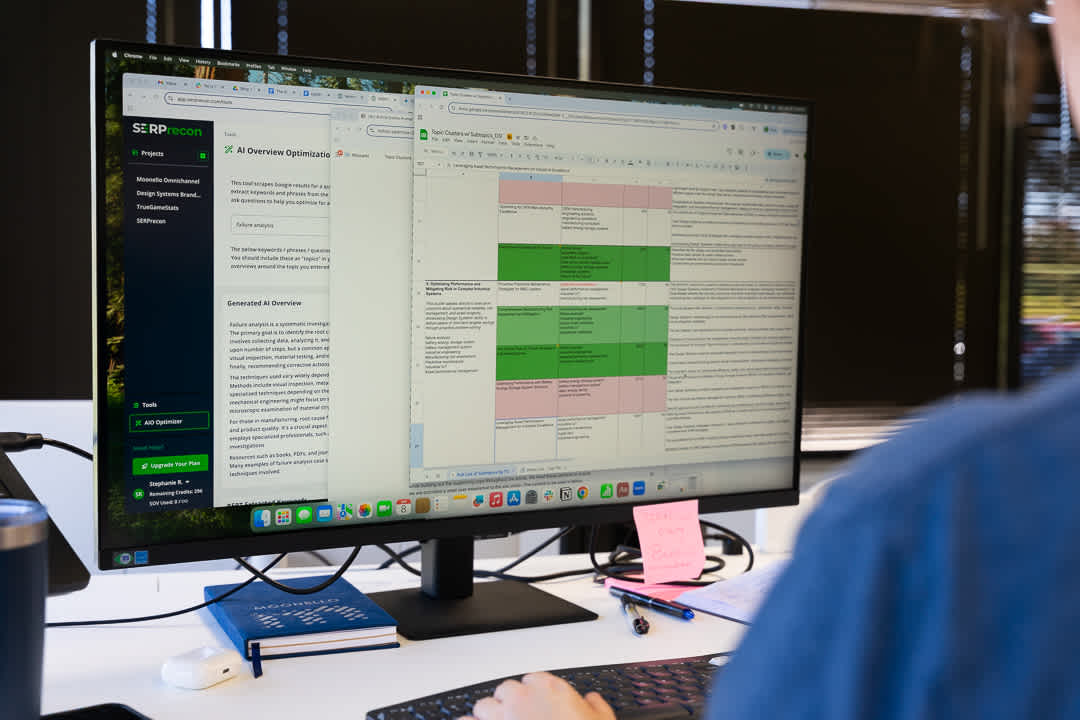Exploring the Software Development Life Cycle: Your Comprehensive Guide
May 12, 2023
The Software Development Life Cycle (SDLC) is a step-by-step process used to create and maintain software applications. It ensures that software is developed efficiently and meets high-quality standards. This guide explains the SDLC's phases, such as planning, designing, coding, testing, and maintaining software. By understanding and following these steps, developers can manage their projects better, reduce risks, and deliver reliable software.

The Software Development Life Cycle (SDLC) is the process that guides the development team through the stages of creating and maintaining software applications. It provides a systematic and disciplined manner to ensure that software products are developed efficiently and meet the highest quality standards. This blog post will explore the SDLC in detail, including its phases, models, best practices, and how it compares to Agile and DevOps methodologies.
As we delve into the world of software development, it's essential to understand the significance of the SDLC and how it impacts the overall development process. Whether you're a seasoned developer or a newcomer to the field, this guide will provide valuable insights and help you navigate the complex projects that come your way.
SDLC Cycle
The SDLC cycle is a framework that outlines the steps involved in the development process, from the initial idea to the final deployment of the software. It consists of several phases, which are:
Planning Phase
Requirement Analysis
Design Phase
Development Phase
Testing Phase
Deployment Phase
Maintenance and Support
Each phase plays a crucial role in ensuring the successful completion of the software development life cycle. By following the SDLC and software life cycle model, development teams can effectively manage their resources, reduce project risks, and deliver high-quality software products.
How SDLC Works
The SDLC works by providing a structured framework for the development team to follow throughout the software development process. By adhering to the SDLC, development teams can ensure that they are following best practices, maintaining a high level of code quality, and efficiently managing their resources. Our custom software development services can help you implement these best practices seamlessly.
The SDLC works by dividing the software development process into distinct phases, each with its own set of objectives, activities, and deliverables. These phases include planning, requirement analysis, design, development, testing, deployment, and maintenance. By following the SDLC, development teams can effectively manage their projects and minimize the risk of project failure. For expert guidance and support throughout your project, consider contacting Moonello.
SDLC Phases
As mentioned earlier, the SDLC consists of several phases, each with its unique purpose and objectives. Let's explore each phase in more detail:
Planning Phase
The planning phase is the initial stage of the SDLC, where the development team evaluates the feasibility of the project, identifies potential risks, and establishes a detailed plan to guide the project from start to finish. This stage involves collaboration between various stakeholders, including project managers, developers, and clients, to ensure that everyone has a clear understanding of the project's goals and expectations. For a comprehensive planning strategy tailored to your needs, check out our custom software development services.
Requirement Analysis
In the requirement analysis phase, the development team gathers and analyzes the software requirements to create a Software Requirement Specification (SRS) document. This document serves as a blueprint for the development process, outlining the system's features, functionality, and performance criteria. It is essential to have a thorough and accurate software requirement specification document and analysis to avoid any miscommunication or confusion during the development process.
Design Phase
During the design phase, the development team creates a detailed system design based on the SRS document. This design provides a visual representation of the software's architecture, components, and data flow. The system design phase is crucial for ensuring that the software's structure is scalable, maintainable, and meets the desired performance requirements.
Development Phase
The development phase is where the actual coding and programming of the software takes place. Developers work on creating software components, modules, and interfaces based on the system design. They also follow coding guidelines and best practices to ensure the software is efficient, secure, and maintainable throughout the entire development cycle. For help with coding and programming, explore our custom software development services.
Testing Phase
Once the software has been developed in the previous phase, it undergoes various tests to ensure it meets the quality standards set out in the SRS document. The testing phase includes unit testing, integration testing, system testing, and acceptance testing. Any defects or issues discovered during the verification phase of testing are addressed by the development team before the software is deemed ready for deployment. If you have any questions or need further assistance, contact us.
Deployment Phase
After the software has passed all testing stages, it is deployed in the production environment. This phase involves installing and configuring the software on the end users' systems, providing user training, and addressing any last-minute issues that may arise during the deployment process.
Maintenance and Support
The final phase of the SDLC involves ongoing maintenance and support for the software. This includes addressing any bugs or issues discovered after deployment, as well as security assurance activities such as providing updates and enhancements to keep the software relevant and functional over time. Learn more about our team and values on our About Us page.
Different SDLC Models
There are several SDLC models that development teams can choose from, each with its unique approach to the software development process. Some of the most popular SDLC models include:
Waterfall Model
Spiral Model
Iterative Incremental Model
Agile Model
V-Shaped Model
Prototype Model
Each model has its pros and cons, and the choice of which to use depends on factors such as project size, complexity, and specific requirements. The next section will explore some of these models in more detail.
Software Development
Software development is the process of creating and maintaining software applications, which involves various activities such as planning, designing, coding, testing, and deployment. The SDLC serves as a roadmap for the software development process, ensuring that development teams follow a systematic approach and adhere to best practices. To get started on your next project, consider contacting us.
The success of a software development project depends on several factors, including the skills and expertise of the development team, effective project management, thorough requirement analysis, and adherence to the chosen SDLC model. By following a well-defined SDLC, development teams can effectively manage their resources, minimize project risks, and deliver high-quality software products on time and within budget.
Iterative Approach
The iterative approach is a software development methodology that focuses on incremental improvements and continuous feedback throughout the development process. Instead of completing each phase of the SDLC sequentially, the iterative approach divides the project into smaller iterations or cycles. Each iteration includes all the phases of the SDLC, allowing the development team to refine the software and address any issues as they arise.
This approach enables development teams to be more flexible and adaptive, allowing them to respond to changing requirements and incorporate feedback from end-users more effectively. The iterative approach is particularly well-suited for complex projects where the requirements may not be fully understood at the outset.
Software Deployment
Software deployment is the final phase of the SDLC, where the completed software is installed and configured on the end-users systems. This phase involves a series of steps, including:
Preparing the deployment environment: This involves setting up the necessary hardware, network, and software infrastructure required to support the application.
Installing the software: The application is installed on the target systems, either manually or using automated deployment tools.
Configuring the software: Any necessary configuration settings are applied to the application, such as database connections, security settings, and user preferences.
Verifying the installation: The development team ensures that the software is functioning correctly on the target systems and that all necessary dependencies are in place.
Providing user training and support: End-users are trained on how to use the software and provided with documentation and support resources to help them become proficient with the application.
The success of the deployment phase is critical to the overall success of the software development project, as it determines whether the end-users can effectively use the software to meet their needs.
Pros and Cons of Using an SDLC Model
Using an SDLC model has several advantages, including:
Providing a structured framework for the development process, ensuring that best practices are followed and that the project stays on track.
Facilitating communication and collaboration between team members and stakeholders, helping to ensure that everyone is on the same page and working towards the same goals.
Reducing the risk of project failure by identifying potential issues early on and allowing the team to address them before they become critical problems.
Ensuring that the software meets the desired quality standards and that it is delivered on time and within budget.
However, there are also some potential drawbacks to using an SDLC model, such as:
Inflexibility: Some SDLC models, like the Waterfall model, can be rigid and inflexible, making it difficult to adapt to changes in requirements or incorporate feedback from end-users during the development process. This can lead to delays and increased costs if significant changes are needed after the project has already progressed through several phases.
Complexity: Some SDLC models, like the Spiral model or certain Agile methodologies, can be more complex and difficult to manage, particularly for teams that are new to these approaches. This can result in confusion, miscommunication, and decreased productivity if not properly managed and supported.
Time-consuming: Some SDLC models may require more time and effort to implement, particularly those that involve multiple iterations or frequent communication and collaboration between team members. This can lead to longer development times and increased costs if not carefully managed.
Overemphasis on process: Relying too heavily on a specific SDLC model can sometimes lead to an overemphasis on following the process, rather than focusing on the end goal of delivering a high-quality software product. This can result in a loss of creativity and innovation, as well as a lack of attention to the specific needs and requirements of the end users.
Despite these potential drawbacks, using an SDLC model can still be highly beneficial for most software development projects, particularly when the appropriate model is selected and implemented in a way that best supports the project's goals and requirements.
What Is the Secure SDLC (Software Development Life Cycle)?
The Secure SDLC is an approach to the software development process that incorporates security best practices and considerations from the very beginning of the project, ensuring that security is integrated throughout the entire software life cycle throughout. By integrating security into the SDLC, development teams can identify and address potential security vulnerabilities and risks early on, reducing the likelihood of security breaches and protecting sensitive information.
Some key aspects of the Secure SDLC include:
Conducting security assessments during the planning and requirement analysis phases, identifying potential threats and vulnerabilities that may impact the software.
Incorporating security requirements into the Software Requirement Specification (SRS) document and system design.
Following secure coding guidelines and best practices during the development phase to reduce the risk of introducing security vulnerabilities into the software.
Performing security testing, such as penetration testing and static code analysis, during the testing and validation phase to identify and address any remaining security vulnerabilities.
Ensuring that security is maintained during the deployment and maintenance phases through ongoing monitoring code quality testing, updates, and support.
By incorporating security best practices throughout the SDLC, development teams can help ensure that their software products are secure, reliable, and compliant with industry standards and regulations.
SDLC Best Practices
To maximize the success of a software development project, it's essential to follow some best practices during the SDLC. Some key best practices include:
Thorough planning: Start with a detailed plan that outlines the project scope, goals, timeline, and resources. This helps ensure that everyone is on the same page and that any potential risks or issues are identified early on.
Effective communication: Ensure that there is clear communication between all team members and stakeholders throughout the project. This helps prevent misunderstandings, reduces the likelihood of errors, and ensures that everyone is working towards the same goals.
Requirement analysis: Perform a thorough requirement analysis to ensure that the software meets the needs of the end users and that all necessary features and functionality are included.
Design review: Conduct regular architecture analysis and design reviews to ensure that the software's architecture and components are suitable for the project requirements and that potential issues are identified and addressed early on.
Code reviews: Perform regular code reviews to ensure that the software is being developed according to coding guidelines, best-practices, and that any potential issues are identified and addressed quickly.
Testing: Conduct thorough testing during the testing phase, including unit testing, integration testing, system testing, and acceptance testing. This helps ensure that the software is functioning correctly and that any defects or issues are identified and addressed before deployment.
Continuous improvement: Use an iterative approach to software development, incorporating feedback from end-users and stakeholders throughout the project to make continuous improvements and refinements to the software.
By following these best practices, development teams can increase their chances of success and deliver high-quality software products that meet the needs of their end-users.
Iterative Incremental Model
The Iterative Incremental Model is a software development approach that combines aspects of both the iterative and incremental approaches. In this model, the development process is divided into smaller iterations or cycles, with each iteration focusing on a specific set of objectives and deliverables. Each iteration includes all the phases of the SDLC, allowing the development team to refine the software and address any issues as they arise.
This model offers a number of advantages, including:
Greater flexibility: The iterative incremental model allows development teams to adapt to changes in requirements or incorporate feedback from end-users more effectively than traditional linear approaches.
Improved risk analysis and management: By breaking the project into smaller iterations, development teams can identify and address potential issues and risks early on, reducing the likelihood of project failure.
Faster delivery: By focusing on a smaller set of objectives and deliverables in each iteration, development teams can deliver functional software more quickly, allowing end-users to start using and benefiting from the software sooner.
Continuous feedback and improvement: The iterative incremental model emphasizes the importance of regular feedback from end-users and stakeholders, enabling development teams to make ongoing improvements and refinements to the software throughout the project.
Better quality: By incorporating testing and quality assurance activities in each iteration, development teams can ensure that the software is thoroughly tested and meets the desired quality standards before it is deployed.
Despite its advantages, the iterative incremental model may not be suitable for all projects or development teams. It requires a high level of collaboration and communication between team members, as well as the ability to adapt to changing requirements and priorities. However, for projects with complex or uncertain requirements, the iterative incremental model can provide a flexible and adaptive approach that maximizes the chances of project success.
Agile Model
The Agile Model is a software development methodology that focuses on flexibility, collaboration, and rapid delivery of functional software. Agile methodologies include Scrum, Kanban, and Extreme Programming (XP), among others. Unlike traditional SDLC models, Agile places a strong emphasis on customer satisfaction, continuous improvement, and the ability to adapt to changing requirements and priorities.
Some key principles of the Agile Model include:
Customer collaboration: Agile methodologies prioritize close collaboration with customers and stakeholders, ensuring that their needs and feedback are continuously incorporated into the development process.
Incremental development: Agile development is based on small, incremental changes and improvements, allowing development teams to adapt to changing requirements and priorities more effectively.
Rapid delivery: Agile methodologies focus on delivering functional software quickly, with frequent releases and ongoing release cycles.
Continuous improvement: Agile development emphasizes continuous improvement, incorporating feedback from end-users, and making ongoing refinements to the software throughout the project.
Team collaboration: Agile methodologies promote strong communication and collaboration between team members, ensuring that everyone is working together effectively and efficiently.
While the Agile Model offers many advantages, it may not be suitable for all projects or development teams. It requires a high level of collaboration, adaptability, and commitment to continuous improvement, which may not be feasible for some teams or projects. However, for projects with complex or uncertain requirements, the Agile Model can provide a flexible and adaptive approach that maximizes the chances of project success.
SDLC vs. Agile
While both the SDLC and Agile methodologies are used for software development, there are some key differences between the two approaches:
Structure: The SDLC is a more structured approach to software development, with distinct phases and a linear progression from one phase to the next. In contrast, Agile methodologies are more flexible and adaptive, with a focus on incremental development and continuous improvement.
Flexibility: The SDLC is generally less flexible than Agile methodologies, as changes to the project scope or requirements can be more difficult to accommodate once the project is underway. Agile methodologies, on the other hand, are designed to adapt to changing requirements and priorities, making them better suited for projects with uncertain or evolving needs.
Collaboration: Agile methodologies place a greater emphasis on collaboration and communication between team members and stakeholders, with a focus on customer satisfaction and continuous feedback. The SDLC, while still involving collaboration, may not prioritize these aspects to the same degree.
Speed: Agile methodologies generally aim for faster delivery of functional software, with frequent releases and ongoing release cycles. The SDLC, particularly in more rigid models like the Waterfall model, may have longer development times and less frequent releases.
Focus: The SDLC is primarily focused on the process of developing software, with a structured approach to planning, design, development, testing, and deployment. Agile methodologies, in contrast, prioritize customer satisfaction, collaboration, and adaptability, with a focus on delivering functional software that meets the needs of the end users.
While both the SDLC and Agile methodologies have their advantages and disadvantages, the choice of which approach to use depends on the specific needs and requirements of the project and the development team.
SDLC vs. DevOps
DevOps is a software development approach that emphasizes the integration of development and operations teams, with a focus on automation, continuous integration, and continuous delivery.
While both the SDLC and DevOps are used for software development, there are some key differences between the two approaches:
Collaboration: DevOps places a strong emphasis on collaboration between development and operations teams, breaking down the traditional barriers between these groups and promoting a shared responsibility for the software's performance and reliability. The SDLC, while still involving collaboration, may not prioritize this aspect to the same degree.
Improved risk management: By breaking the project into smaller iterations, development teams can identify and address potential issues and risks early on, reducing the likelihood of project failure.
Faster delivery: By focusing on a smaller set of objectives and deliverables in each iteration, development teams can deliver functional software more quickly, allowing end-users to start using and benefiting from the software sooner.
Continuous feedback and improvement: The iterative incremental model emphasizes the importance of regular feedback from end-users and stakeholders, enabling development teams to make ongoing improvements and refinements to the software throughout the project.
Better quality: By incorporating testing and quality assurance activities in each iteration, development teams can ensure that the software is thoroughly tested and meets the desired quality standards before it is deployed.
Despite its advantages, the iterative incremental model may not be suitable for all projects or development teams. It requires a high level of collaboration and communication between team members, as well as the ability to adapt to changing requirements and priorities. However, for projects with complex or uncertain requirements, the iterative incremental model can provide a flexible and adaptive approach that maximizes the chances of project success.
In conclusion, the Software Development Life Cycle (SDLC) is a critical framework for guiding development teams through the various stages of creating and maintaining software applications. By understanding the different SDLC models, such as the Waterfall, Agile, and DevOps approaches, development teams can select the most appropriate agile methodology for their specific project needs. By following best practices throughout the SDLC, teams can improve collaboration, manage risks effectively, and ultimately deliver high-quality software products that meet the needs of their end users.
As the software development landscape continues to evolve, it is essential for development teams to stay informed about new methodologies and best practices, ensuring that they can adapt and thrive in this fast-paced and ever-changing field. By embracing the principles of the SDLC and leveraging the strengths of different models, teams can maximize their chances of success and deliver software products that provide value and satisfaction to their customers.
Conclusion
understanding the Software Development Life Cycle (SDLC) is crucial for creating high-quality software. By following its structured phases—planning, design, development, testing, deployment, and maintenance—teams can ensure their projects are well-organized, efficient, and meet user needs. Whether you're new to software development or an experienced developer, applying SDLC principles can help you achieve successful project outcomes and deliver software that truly satisfies users. For expert support and custom solutions tailored to your business, contact us today.



